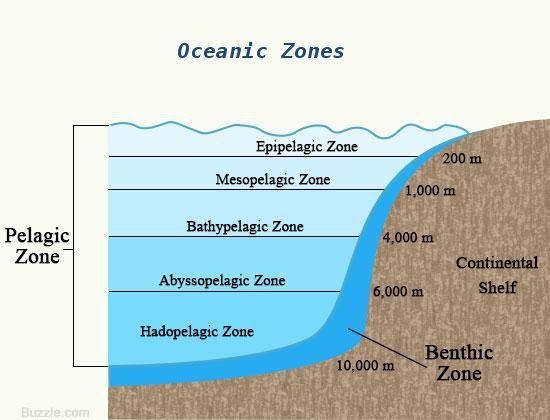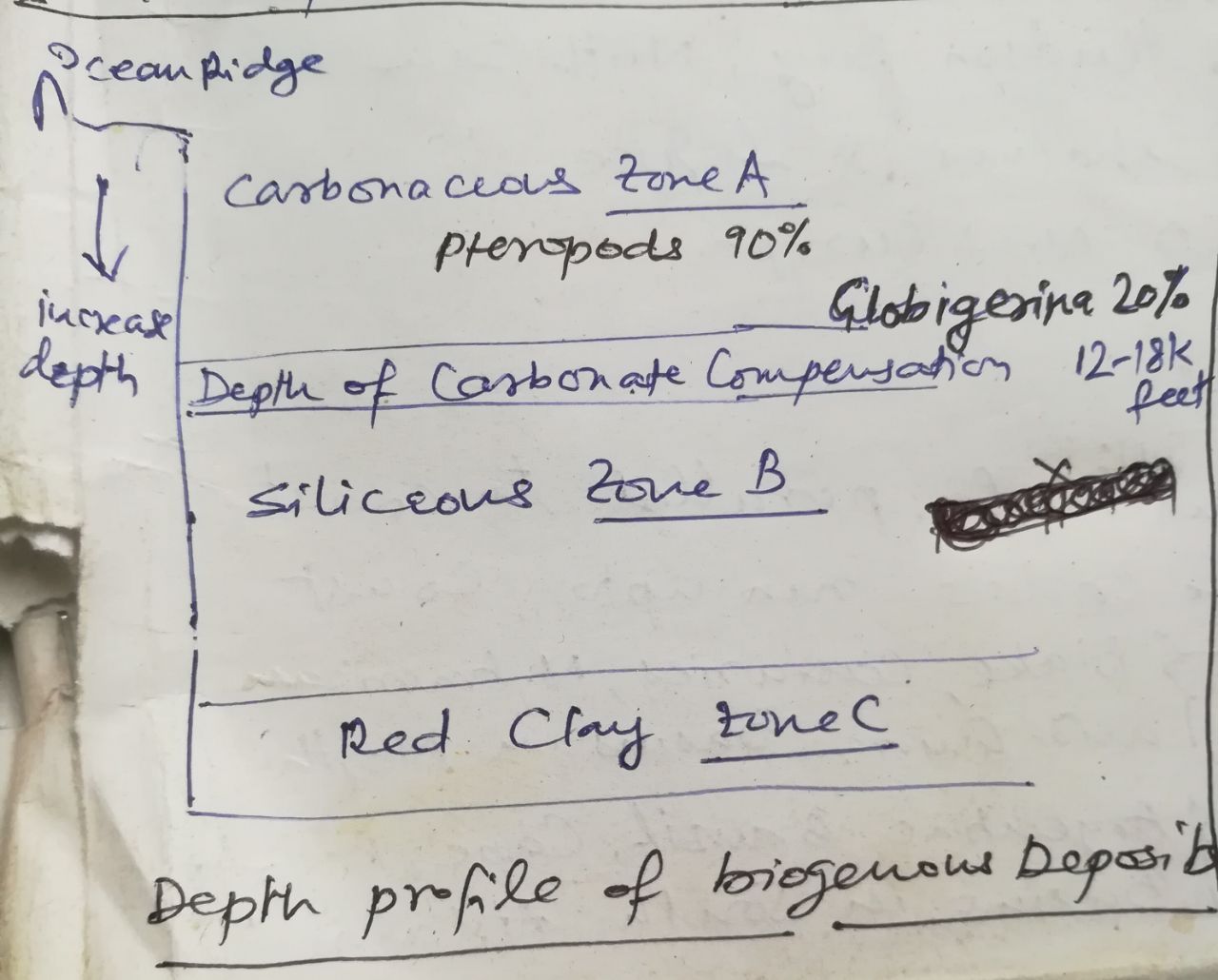The classification of oceanic deposits can be done on the basis of Source, Sediments and Location. The classification and distribution of oceanic deposits is given below in brief. Oceanic deposits are important resources and distributed along the vast sea surface. They must be preserved and exploitation of those resources need to be sustainable.
Table of Contents
A. Source based Classification of Oceanic Deposits
- Terrigenous/Lithogenous (material eroded from land)
- Hydrogenous (e.g. Carbonite)
- Biogenous (Siliceous, Calcareous)
- Cosmogenous (e.g. meteorite)
- Vulcanous
- Inorganic precipitate (from Air)
B. Sediment based Classification of Oceanic Deposits

- Pelagic (open sea, not close to the shore)
- Littoral (close to the shore)
- Hemipelagic (between littoral and pelagic)
- Eupelagic (uppermost part of the oceanic zone, lying above the mesopelagic zone, that receives enough sunlight to allow photosynthesis)
C. Location based Classification of Oceanic Deposits
- Continental
- Littoral (land)
- Shallow Waters (1000 fathoms depth)
- Terrigenous (>1000 fathom depth)
- Neritic (Shallow Sea)
- Pelagic (Deep Sea)

Lithogenous Deposits
- Depth of deposit is according to size
- Continental shelf has boulders
- followed by gravel, sand, silt, clay and mud
- Mud can be of four types:
- Red Mud: iron oxides
- Blue Mud: Iron + Sulfur
- Green Mud: (Blue mud + Sea Water), has potassium silicate
- Coral mud: coral reefs derivative

Biogenous Deposits
- These are the oceanic deposits derived from dead remains of living organisms. It can be classified into
- Siliceous Ooze
- Diatoms : Diatoms are single-celled micro-algae and can do photosynthesis, i.e. autotrophs. Their cell-wall is made of silica, giving it glassy appearance.
- Radiolarians: Radiolarians are single celled Protozoans. They secrete silica and live on surface or upper layer of oceans.
- Siliceous ooze is most abundant in the Pacific Ocean.
- Calcareous Ooze
- They are formed by depositions of calcareous skeletons and carbonate secretions of planktonic organisms, viz;
- Pteropods: marine molluscs, abundant in Indian and Atlantic Oceans
- Globigerina: Protozoans, abundant in Pacific
- Coccolithophores: They are single-celled autotrophic phytoplanktons which have calcareous shell called coccolith.
- They are formed by depositions of calcareous skeletons and carbonate secretions of planktonic organisms, viz;
- Siliceous Ooze
Classification and distribution of oceanic deposits is important topic for UPSC Geography Optional. Google the terms to understand them well enough and practice the diagrams given along with this article. These are the basics of Oceanography and must be at your fingertips.
Suggested Reading: